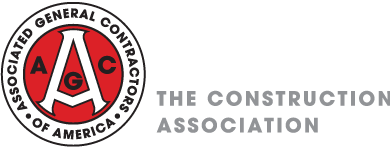
Modular Steel Buildings Comprehensive Guide
Modular steel buildings are revolutionizing the construction industry. Known for their durability, cost-effectiveness, and quick assembly, these structures are gaining popularity for a variety of applications. In this comprehensive guide, we'll delve into everything you need to know about modular steel buildings.
What Are Modular Steel Buildings?
Modular steel buildings are pre-engineered structures made of steel modules that are assembled on-site. These buildings offer a high degree of customization and are known for their strength and durability.
Key Features
Pre-fabricated Components
These are the building blocks of your structure, manufactured in a controlled environment to ensure quality and precision.
Quick Assembly
The use of pre-fabricated components allows for faster construction, reducing the overall project timeline.
High Durability
Made from high-quality steel, these buildings are designed to withstand harsh conditions and have a long lifespan.
Cost-effective
The streamlined construction process and reduced labor costs make modular steel buildings a budget-friendly option.
Types of Modular Steel Buildings
Single-span
These are free-standing structures that are ideal for smaller spaces like garages or workshops.
Multi-span
These buildings have multiple frames, making them suitable for larger applications like warehouses or industrial complexes.
Tapered Column
These structures feature columns that taper towards the top, providing a unique aesthetic and structural advantages.
Straight Column
These buildings use straight columns from base to top, offering a traditional look and easy interior customization.
Advantages of Modular Steel Buildings
Cost-effectiveness
One of the most significant advantages is the cost savings, both in terms of material and labor.
Durability
Steel is known for its durability, making these buildings long-lasting and low-maintenance.
Speed of Construction
The pre-fabricated nature allows for quick assembly, reducing construction time by up to one-third compared to traditional methods.
Sustainability
Steel is recyclable, making modular steel buildings an eco-friendly option.
The Process of Building a Modular Steel Building
Planning and Design
The first step involves planning the layout and design, taking into consideration the building's purpose and requirements.
Fabrication
The steel modules are then fabricated in a factory setting, ensuring quality and precision.
Site Preparation
The site is prepared for assembly, including laying the foundation and ensuring proper leveling.
Assembly
The pre-fabricated modules are then assembled on-site, often requiring fewer labor hours compared to traditional construction.
Finishing Touches
Final steps include installing doors, windows, and any custom features.
Applications of Modular Steel Buildings
Commercial use: Offices, retail stores
Industrial use: Warehouses, manufacturing plants
Agricultural use: Barns, storage units
Recreational facilities: Sports complexes, arenas
Much More!
Materials and Components
Types of Steel Used
Carbon Steel
High Tensile Strength: Ideal for structural components.
Affordability: Generally less expensive than other types of steel.
Alloy Steel
Corrosion Resistance: Enhanced properties make it ideal for outdoor use.
High Elasticity: Suitable for parts that require flexibility.
Stainless Steel
Aesthetic Appeal: Offers a polished, modern look.
Low Maintenance: Resistant to staining and corrosion.
Weathering Steel
Natural Rust: Forms a protective layer over time.
Aesthetic Appeal: Offers a rustic, industrial look.
Insulation Options
Fiberglass
Thermal Efficiency: Excellent for temperature control.
Soundproofing: Provides good acoustic insulation.
Foam Boards
Lightweight: Easy to install and handle.
High R-Value: Excellent thermal resistance.
Spray Foam
Seamless Insulation: Fills gaps and hard-to-reach spaces.
Quick Installation: Sets and cures quickly.
Exterior Options
Metal Cladding
Durability: Long-lasting and resistant to extreme weather.
Variety: Available in multiple colors and finishes.
Brick Veneer
Classic Look: Offers a traditional aesthetic.
Insulation: Adds an extra layer of thermal insulation.
Composite Panels
Dual Function: Provides both insulation and aesthetic appeal.
Easy Installation: Comes in large, easy-to-install panels.
Stucco Finish
Texture: Offers a variety of textures and colors.
Weather Resistance: Good for extreme climates.
Customization Options
Size and Dimensions
Modular steel buildings offer flexibility in size, with options ranging from small storage units to large industrial complexes.
Aesthetic Features
Choose from a variety of colors, finishes, and architectural details to match your brand or personal style.
Functional Add-ons
Additional features like skylights, ventilation systems, and solar panels can be easily incorporated.
Sustainability and Environmental Benefits
Energy-efficient insulation options
Steel is 100% recyclable, reducing waste
Safety and Building Codes
Fire Resistance
Steel is non-combustible, offering superior fire resistance.
Earthquake and Wind Resistance
Engineered to meet or exceed local building codes, ensuring safety against natural disasters.
Conclusion
Modular steel buildings offer a plethora of advantages, from cost savings to sustainability. Whether you're looking to build a commercial office or an industrial warehouse, JB STEEL™ has the expertise to bring your vision to life.

